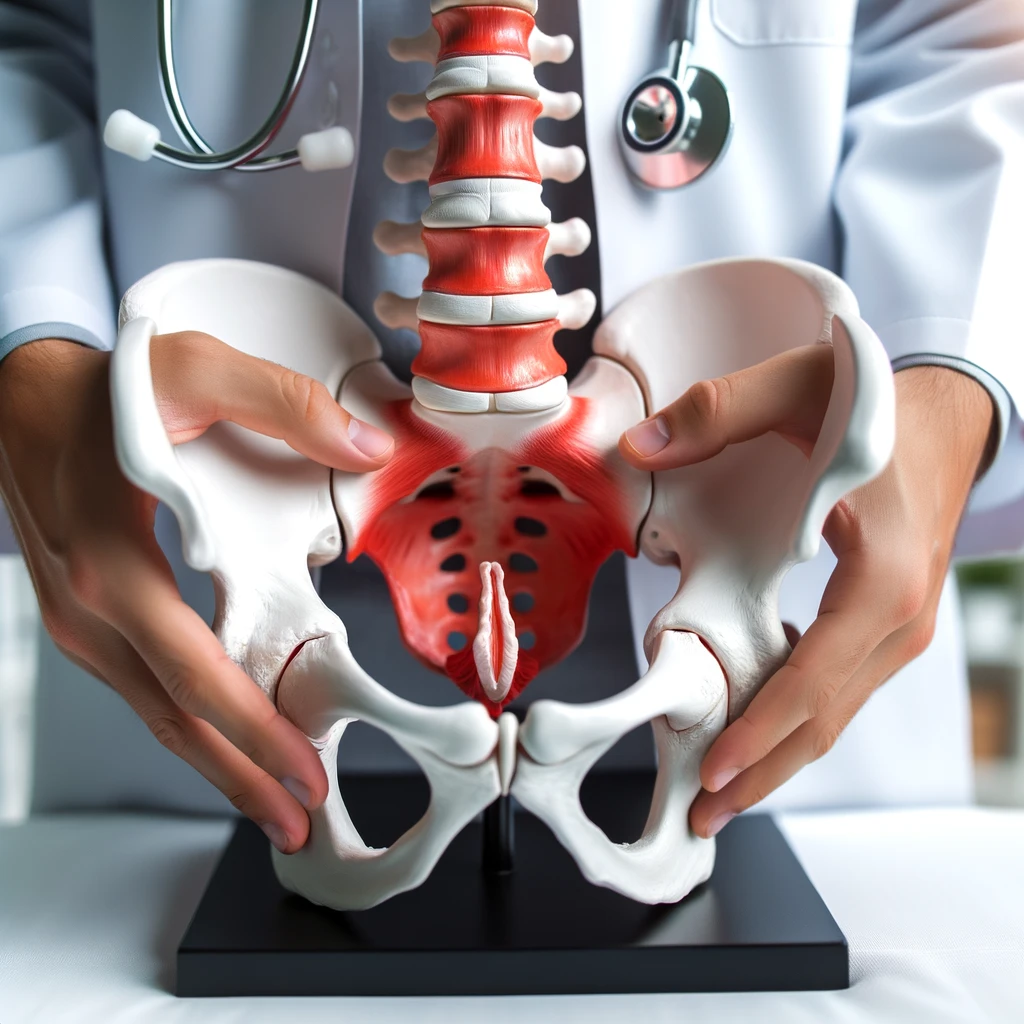Back
Why do I have chronic pelvic floor dysfunction?
By Shannon Strauch, PTA, STMT-1 on 7/26/2024

Chronic pelvic floor dysfunction (PFD) is a condition characterized by the inability to correctly relax and coordinate the muscles of the pelvic floor. This dysfunction can lead to a variety of symptoms and has numerous potential causes, including muscular dysfunctions. Here is a detailed look at some of these causes and how pelvic floor therapy can help:
Causes of Chronic Pelvic Floor Dysfunction
Childbirth
:Muscular Impact
: Vaginal delivery can overstretch and weaken the pelvic floor muscles, leading to prolapse, urinary incontinence, and pain.
Pelvic Floor Therapy
: Therapy can involve strengthening exercises, manual therapy, and education on proper body mechanics to help restore muscle function.
Chronic Constipation
:Muscular Impact
: Repeated straining can lead to overactive pelvic floor muscles and pain.
Pelvic Floor Therapy
: Techniques such as biofeedback, relaxation exercises, and dietary changes can help manage symptoms.
Pelvic Surgery
:Muscular Impact
: Surgeries like hysterectomy or prostatectomy can disrupt the normal function of pelvic floor muscles and nerves.
Pelvic Floor Therapy
: Post-surgical rehabilitation may include targeted exercises, scar tissue mobilization, and pain management strategies.
Repetitive Heavy Lifting
:Muscular Impact
: Constant pressure from lifting can weaken the pelvic floor muscles, leading to dysfunction.
Pelvic Floor Therapy
: Strengthening the core and pelvic floor muscles, along with teaching proper lifting techniques, can prevent further damage.
Obesity
:Muscular Impact
: Excess body weight increases pressure on the pelvic floor muscles, causing them to weaken over time.
Pelvic Floor Therapy
: Weight management, strengthening exercises, and lifestyle modifications are key components of treatment.
Chronic Coughing
:Muscular Impact
: Conditions causing frequent coughing can strain the pelvic floor muscles, leading to dysfunction.
Pelvic Floor Therapy
: Addressing the underlying cause of the cough, along with pelvic floor exercises, can alleviate symptoms.
Pelvic Trauma
:Muscular Impact
: Injuries to the pelvic region can damage muscles and nerves, resulting in pain and dysfunction.
Pelvic Floor Therapy
: Rehabilitation may include manual therapy, exercises to improve muscle function, and pain management techniques.
Postural Issues
:Muscular Impact
: Poor posture or prolonged sitting can lead to muscle imbalance and tension in the pelvic floor.
Pelvic Floor Therapy
: Postural correction, ergonomic adjustments, and specific exercises can help improve muscle function.
Psychological Factors
:Muscular Impact
: Chronic stress or anxiety can cause pelvic floor muscle tension and pain.
Pelvic Floor Therapy
: Relaxation techniques, biofeedback, and cognitive-behavioral therapy can be beneficial.
Hormonal Changes
:Muscular Impact
: Menopause and other hormonal changes can affect muscle tone and function in the pelvic area.
Pelvic Floor Therapy
: Hormone therapy, alongside pelvic floor exercises, can help maintain muscle strength and function.
Muscular Dysfunctions in Pelvic Floor Dysfunction
Hypertonic Pelvic Floor Muscles
:Description
: Muscles are too tight and unable to relax.
Symptoms
: Pain during intercourse, urinary urgency, and difficulty with bowel movements.
Therapy
: Relaxation techniques, manual therapy, and biofeedback to teach muscle relaxation.
Hypotonic Pelvic Floor Muscles
:Description
: Muscles are too weak and lack tone.
Symptoms
: Urinary incontinence, pelvic organ prolapse, and fecal incontinence.
Therapy
: Strengthening exercises, such as Kegels, and functional retraining to improve muscle tone.
Pelvic Floor Muscle Coordination Issues
:Description
: Difficulty coordinating the contraction and relaxation of pelvic floor muscles.
Symptoms
: Incomplete bladder or bowel emptying, pain, and urgency.
Therapy
: Biofeedback, neuromuscular re-education, and specific coordination exercises.
How Pelvic Floor Therapy Can Help
Manual Therapy
:Techniques include myofascial release, trigger point therapy, and massage to relieve muscle tension and improve blood flow.
Exercise Programs
:Customized exercises to strengthen or relax the pelvic floor muscles, including Kegels, squats, and pelvic tilts.
Biofeedback
:Uses monitoring to provide feedback on muscle activity, helping patients learn to control pelvic floor muscles more effectively.
Education and Lifestyle Modifications
:Guidance on posture, ergonomics, and activities to avoid that might exacerbate symptoms.
Pain Management
:Techniques such as electrical stimulation, heat therapy, and relaxation exercises to reduce pain.
Behavioral Interventions
:Training in bladder and bowel habits, fluid and diet management, and stress reduction techniques.
Pelvic floor therapy offers a comprehensive approach to treating chronic pelvic floor dysfunction, addressing both the symptoms and underlying causes to improve overall quality of life. Experiencing pelvic floor dysfunctions and looking to optimize your well being with pelvic floor physical therapy? Reach out to us at Pelvic Health Center in Madison, NJ to set up an evaluation and treatment! Feel free to call us at 908-443-9880 or email us at receptionmadison@pelvichealthnj.com.
Read More:
How Chronic Pelvic Congestion in Men Contributes to Prostatitis By Shannon Strauch, PTA, STMT-1 on 12/11/2024 How lymphatic issues can cause symptoms of prostatitis Prostatitis and Tight Pelvic Floor Muscles: A Comprehensive Guide By Shannon Strauch, PTA, STMT-1 on 12/10/2024 How a tight pelvic floor can be the reason for prostatitis symptoms
Are you ready to live pain free?
Request An Appointment